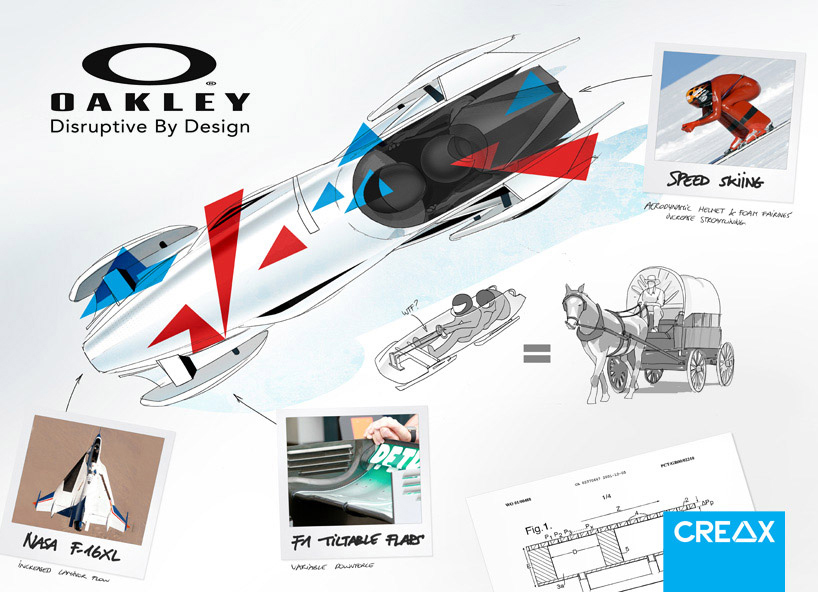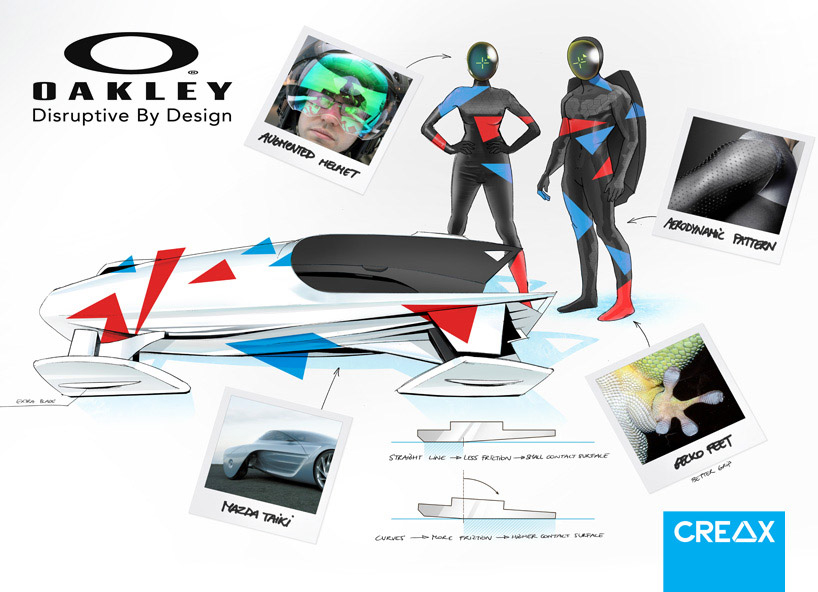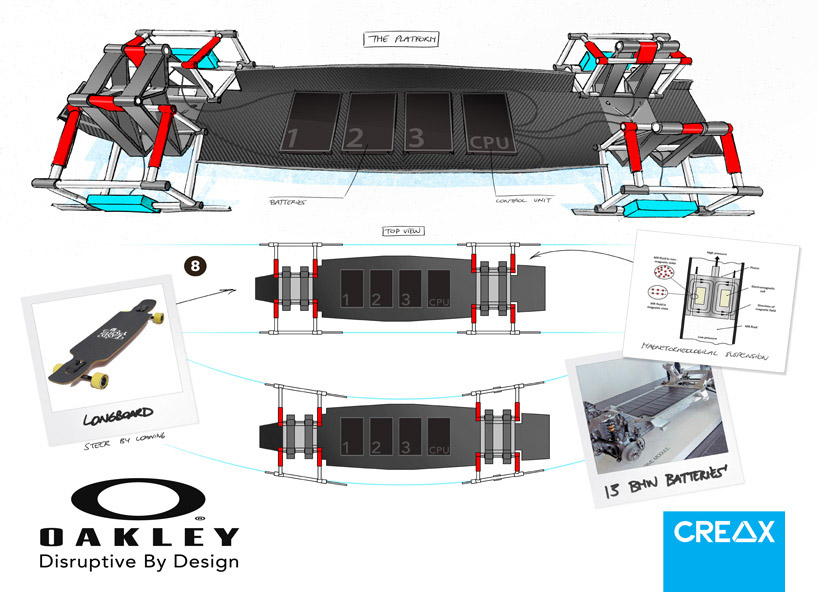
Next Generation Bobsleigh by dreams R free from belgium
designer's own words:
OAKLEY: #Disruptive by design
Bobsleighing is a high-tech and innovative discipline. Or not?
Believe it or not, bobsleighs are steered like horse-drawn carriages. Not exactly what you expect from a sport where a second equals an eternity, no?
How to disrupt this discipline? How to improve the conventional design of the sled and optimize the performance of the athletes? The solution is simple yet ingenious: transfer ideas & technologies from other industries that face similar challenges. A philosophy preached by Steve Jobs, Elon Musk and – well euh – us. The advantages are clear: a structured ideation process, no need for re-search, and decreased development times. We introduce about 15 technologies in bobsleighing; some rather mainstream, others really cutting-edge (and -ice). Concepts derived from the long-board, the BMW i3, Formula 1, Augmented Reality, NASA airplanes, gecko feet and even your daily shaver were transformed into one concept that will shatter world records at the next Winter Olympics, hopefully.
Today, the sleigh is steered by gently pulling two rings connected to the steering mechanism with ropes. Only the front ‘runners’ can be moved, those in the back are fixed to the sleigh.
We propose a new steering mechanism similar to the one of a long-board or incumbent bike. By pushing their body weight to one side of the bob, the runners will slightly switch direction to complete a perfect line through the curve. The runners themselves are suspended in the sled through magneto-rheological dampers, providing self-regulation damping. This also allows changing the position of the runners on the ice. Along the straight sectors, the runners have a small contact area, while in the corners the runners are pushed completely into the ice, providing more grip. To decrease the friction, little vibrations are conveyed to the runners, a proven technology called acoustic lubrication.
To improve aerodynamics, we implemented a drag reduction system (DRS): by tilting the flaps on the sleigh, the down force can be controlled. Along the straight sectors the down force is reduced to gain speed and in the corners it is increased so the sleigh sticks to the banked curve.
We all love pronounced quadriceps in tight spandex bodysuits. Still we believe there are some new trends in bobsleigh fashion coming up. We designed a hard shell to put on the back of the athletes. When crouched down, this shell will act as a spoiler, improving the airflow over the sleigh. Their shoes are equipped with a gecko-like surface providing superior grip when launching the bobsleigh whilst being easy to release from the ice at the same time.
We can’t wait to translate these ideas into reality and bring that golden medal home in 2018.
top view of the sleigh. The hard shell on the back of the ‘pushers’ improves the aerodynamics of the sleigh. titlable flaps borrowed from the F1 and microholes in the nose to improve laminair flow.
The crew also gets an update. augmented reality helmets. More aerodynamic textured suits. Gecko-inpired shoes for better grip.

The sleigh steers like a longboard by leaning. The chassis is made of carbon fibre and rheologic dampeners enhance the ride and improve the steering.
vibrations on the skates will reduce the friction of the sleigh. Coating derived from shaving blades can also reduce friction.